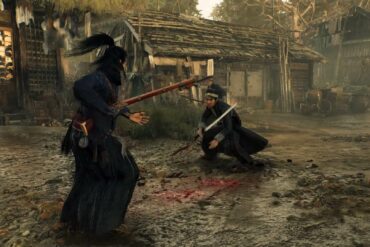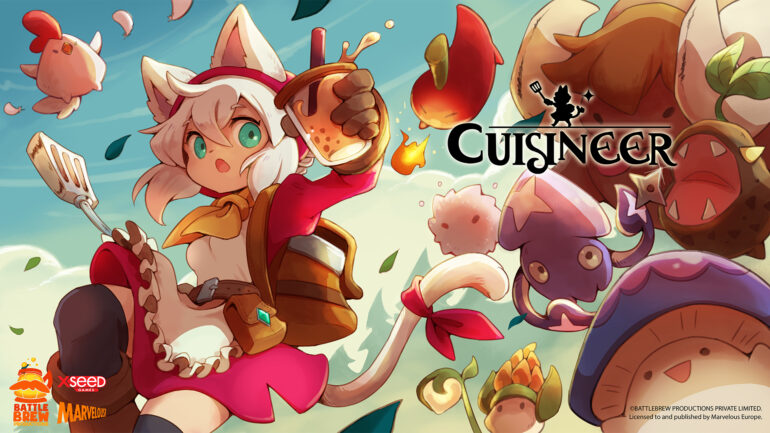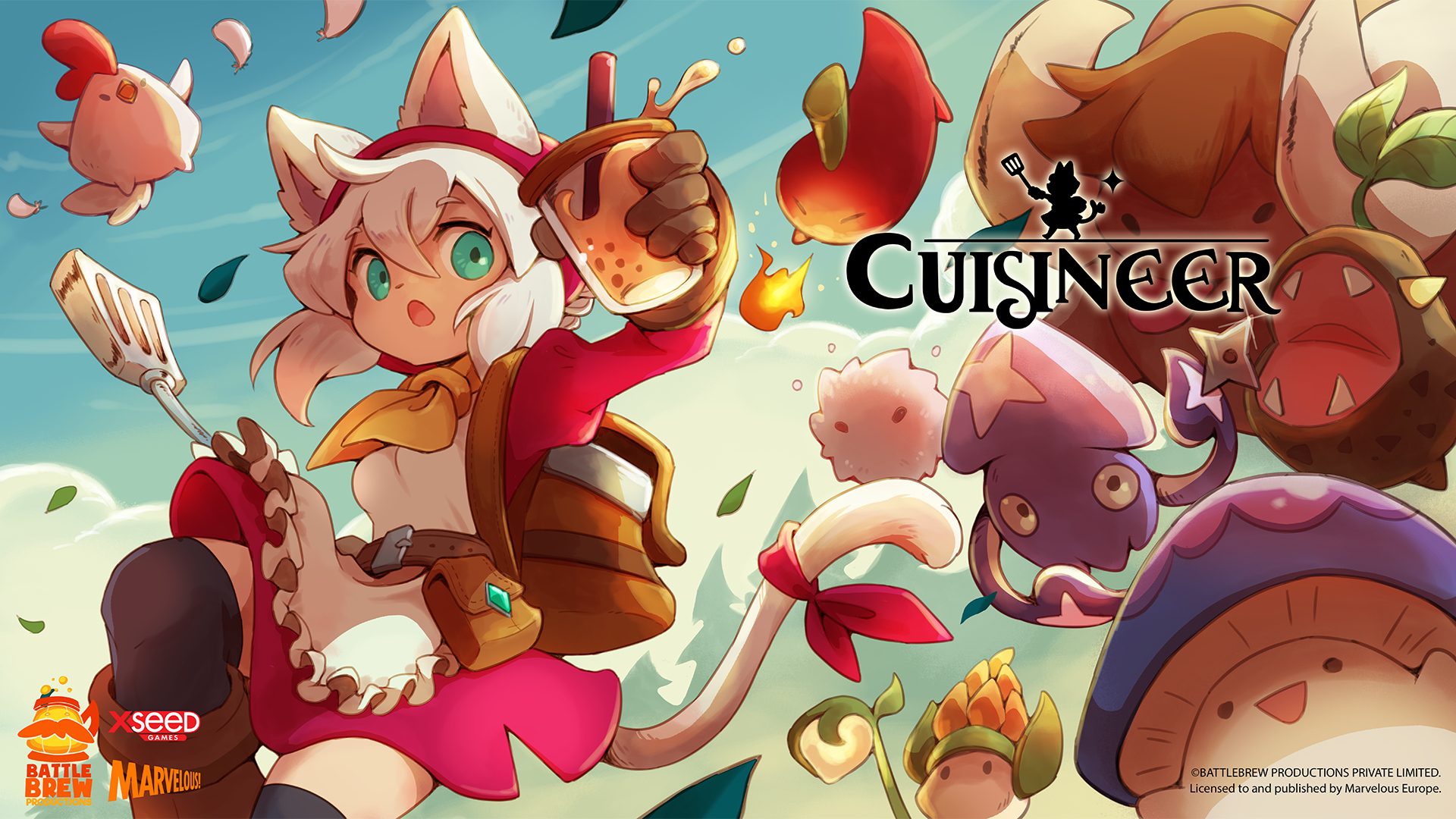I’ve always had a passion for games that involve hunting monsters, gathering items, and trading them for resources to advance in the game. When I think about this, titles like Runescape and Final Fantasy 14 come to mind, among many others. However, I have never played a game that requires me to hunt and collect items to put those items toward running a restaurant. Cuisineer is a roguelite that mixes dungeons and monsters with operating a kitchen in a combination that provides endless fun. The concept is straightforward: no dungeon expeditions mean no ingredients, and without ingredients, your restaurant won’t have any food to serve.
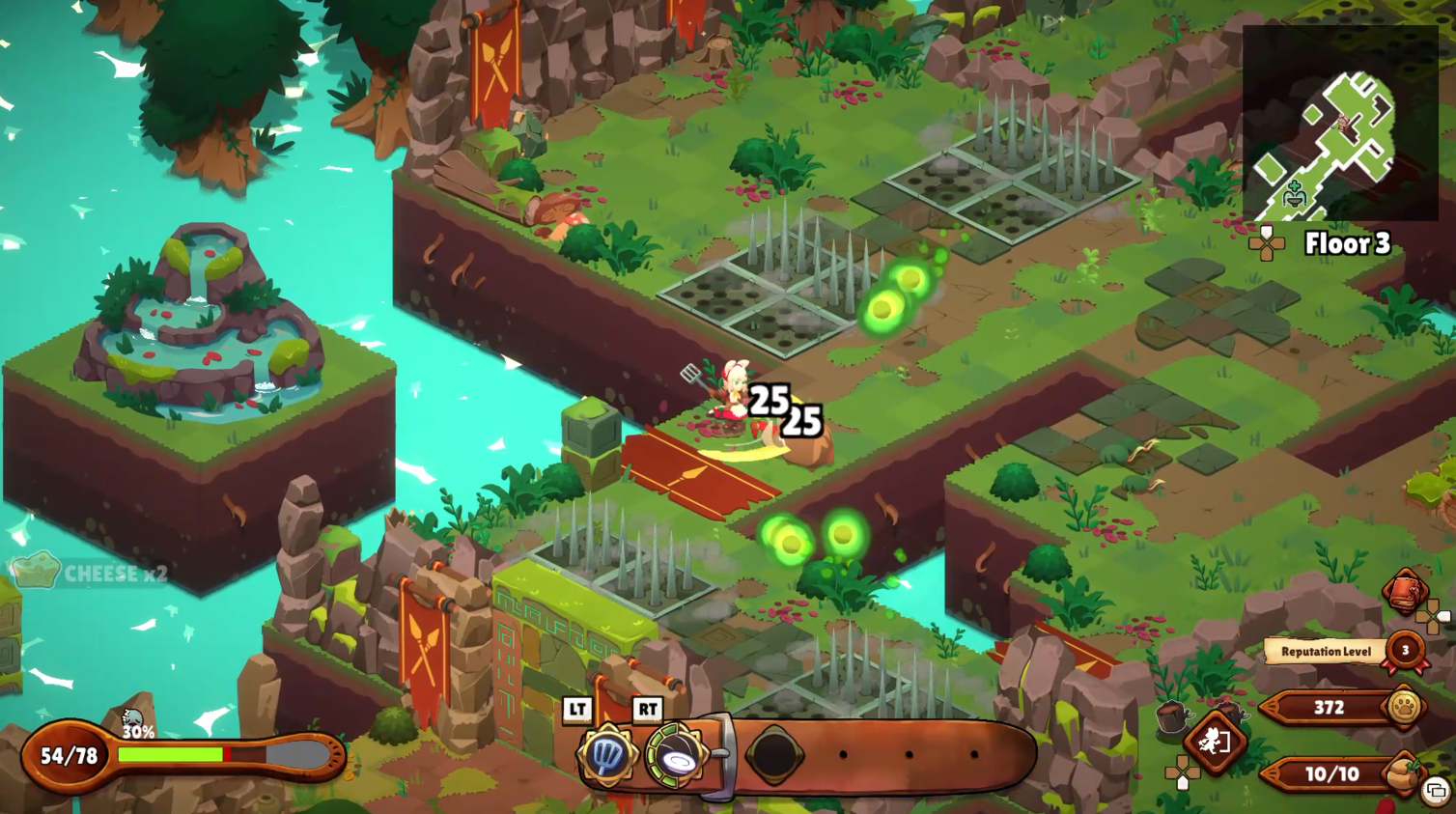
In Cuisineer, you play as Pom, a young adventurer who comes home to care for and restore her family’s restaurant. You quickly find out the restaurant owes the tax man a lot of money, and you start your adventure to pay the debts and restore the restaurant to its former glory.
As an experienced adventurer, you are capable of exploring various dungeons, killing monsters, and collecting the resources required to keep the restaurant afloat. Cuisineer has cute visuals with its characters and monsters and is themed well to set a peaceful environment. Even the restaurant items presented a tasty visual that left me wanting a nice bowl of Ramen. The music, although repetitive, contributes nicely to the relaxing mood of the game.
“Each dungeon playthrough to keep things fresh and interesting.”
Town exploration works well for providing additional side quests and content to play throughout the game. You have a daily calendar of activities to follow, which might highlight a specific recipe being in focus for the day or that it might be someone’s birthday so that you can purchase a gift.
Exploring the town, you will find the ability to collect new types of potions and buffs for your dungeon crawl, as well as the ability to find new weapons and equipment. Talking to the cute town people allows you to pick up side quests, which are always in the form of collecting items in exchange for a new recipe. These unique recipes often sell for better value than others, so they are worth obtaining.
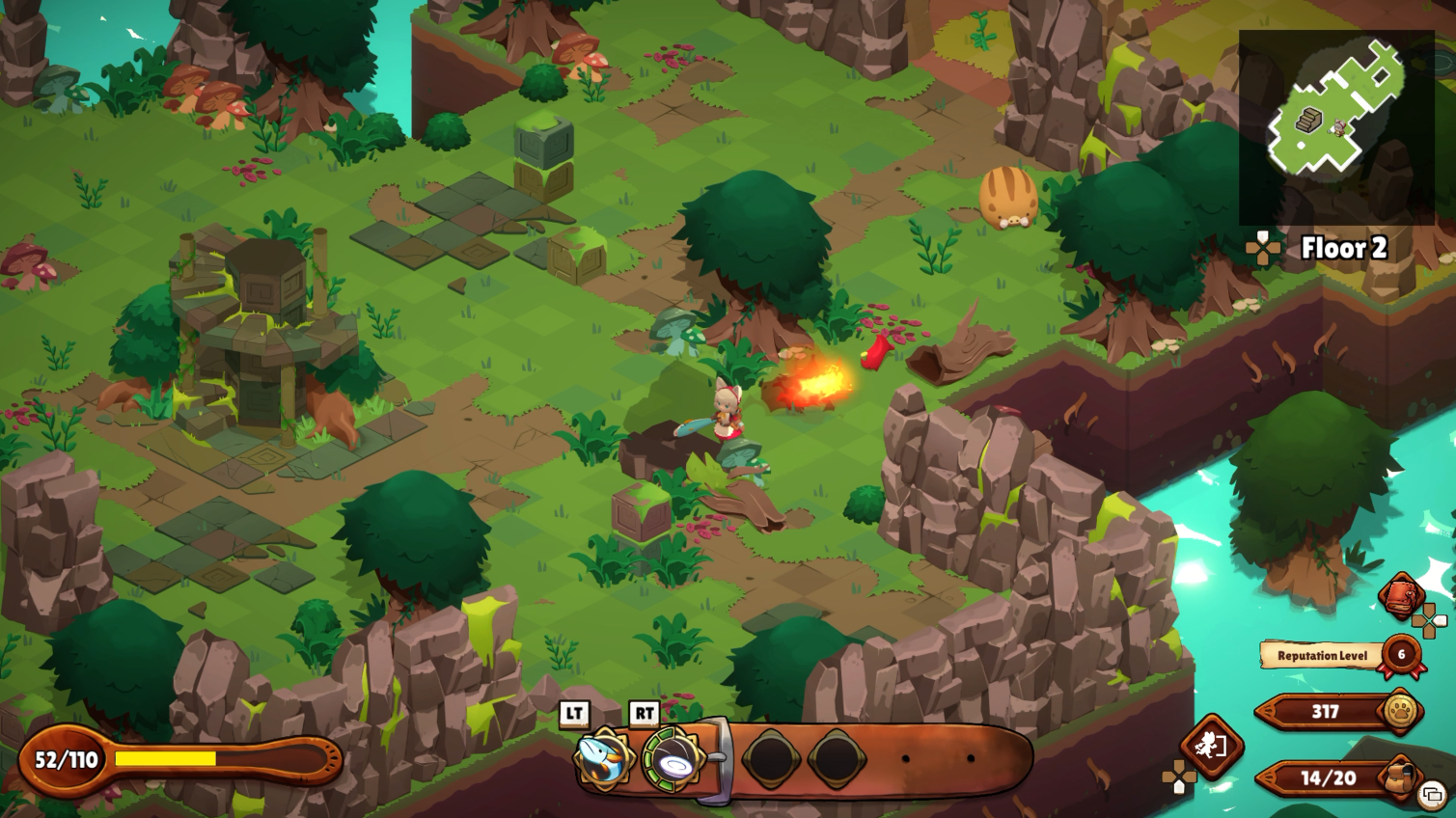
Through each dungeon in Cuisineer, you will fight monsters that resemble vegetables and animals that, when killed, resemble matching items. For example, I loved the Cheelee monster, which resembles a chili that can breathe fire as an attack, and the Peegie, shaped like a pig that can charge at you and do poison damage with its farts. There are also tricky bosses to fight, such as the Big Black Chicken, which shoots its feathers and hunts you down.
There are four different dungeon worlds that each have their distinct environments. From leafy green to fiery volcanoes, each area is fleshed out with its own enemies, traps, and surprises. For example, in the green ruins, there are traps with moving spikes or shooting arrows, and in the Mala Caverns, there are shooting lava pits and crumbling lava floors. One nice aspect of these dungeons was their generative landscape, meaning the structure and monsters were never the same for each dungeon playthrough to keep things fresh and exciting.
“My favorite weapon in Cuisineer was the Smackeral, which, yes, is a fish you use to pound enemies.”
While out in the dungeons, you must also collect items such as wood and types of stone that help build new furniture and objects to improve your restaurant or further improve the storage and capabilities of items such as your fridge or oven. This helped allow some personalization to be added to the kitchen, whether you wanted a wooden style, stone style, or more. Additionally, the ability to obtain items such as plants further adds to the customization you can create for your restaurant.
There are various weapons, from close-range swords to ranged items such as throwing plates and egg bombs. My favorite weapon in Cuisineer was the Smackeral, which, yes, is a fish you use to pound enemies. Additionally, the weapons and equipment give powerups, such as setting enemies on fire or leaving a bolt of lightning behind you when you run.
Playing through a dungeon in Cuisineer and attacking enemies with my fire-infused fish weapon was relatively enjoyable. Likewise, dashing around with my lightning bolt damage meant I attacked my opponents with three different attacks at any point during my assault.
The combination of the lightning bolt animation with the bomb animations, all while dashing and attacking the enemy, made it near impossible to even see the enemies closing in on you. This leaves you often open to take damage mindlessly.
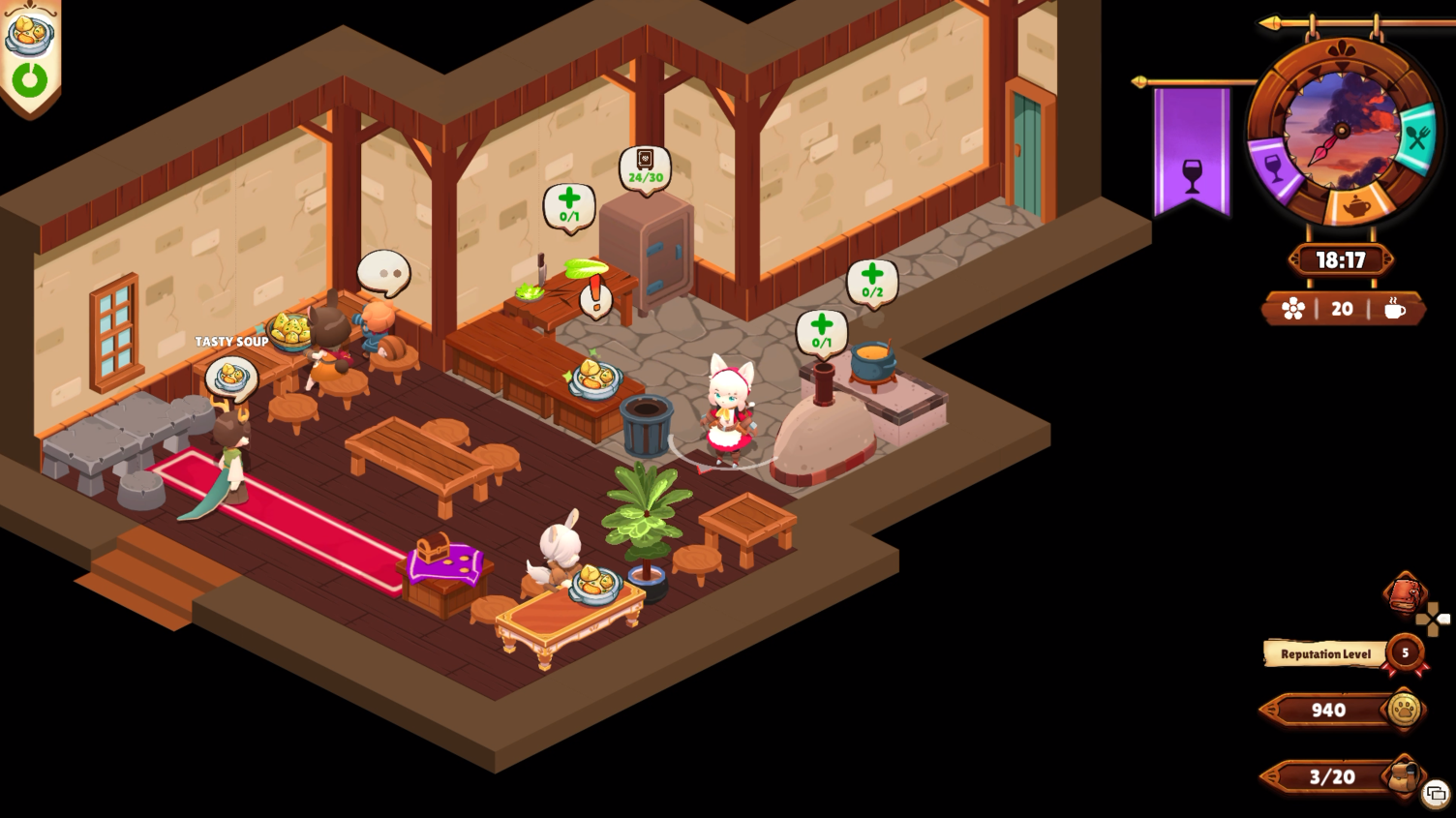
“You must juggle taking orders, cooking the meals, and ensuring your customers pay.”
Back in the kitchen, you must juggle taking orders, cooking the meals from the various items and recipes you have collected, and ensuring your customers pay. Take too long for these activities, and your customers may leave or become unhappy. While getting things wrong occasionally lost a customer, it rarely felt there were consequences or benefits for being quick to serve customers. However, the ability to serve them became more difficult as the game went on.
The more you play, the more complex the enemies become and the more complicated your kitchen needs to be. You will serve more diners, have more intricate orders, and have unhappy customers when you don’t have the dish they are after. If you don’t balance your restaurant operations with your dungeon hunting, you cannot make the recipes your customers want. While the restaurant operations can go through periods of being repetitive, the occasional new recipe and uplifted facilities help keep this somewhat fresh.
Ultimately, to achieve your goal of paying debts off quickly, you are going to need to serve more customers and also make more complex meals that pay more. To obtain these more elaborate meals, you must complete side quests that often require collecting items in exchange for a recipe. You can spend your time outside the restaurant and dungeons talking to the community, picking up new quests, and picking up new items to furnish your restaurant.
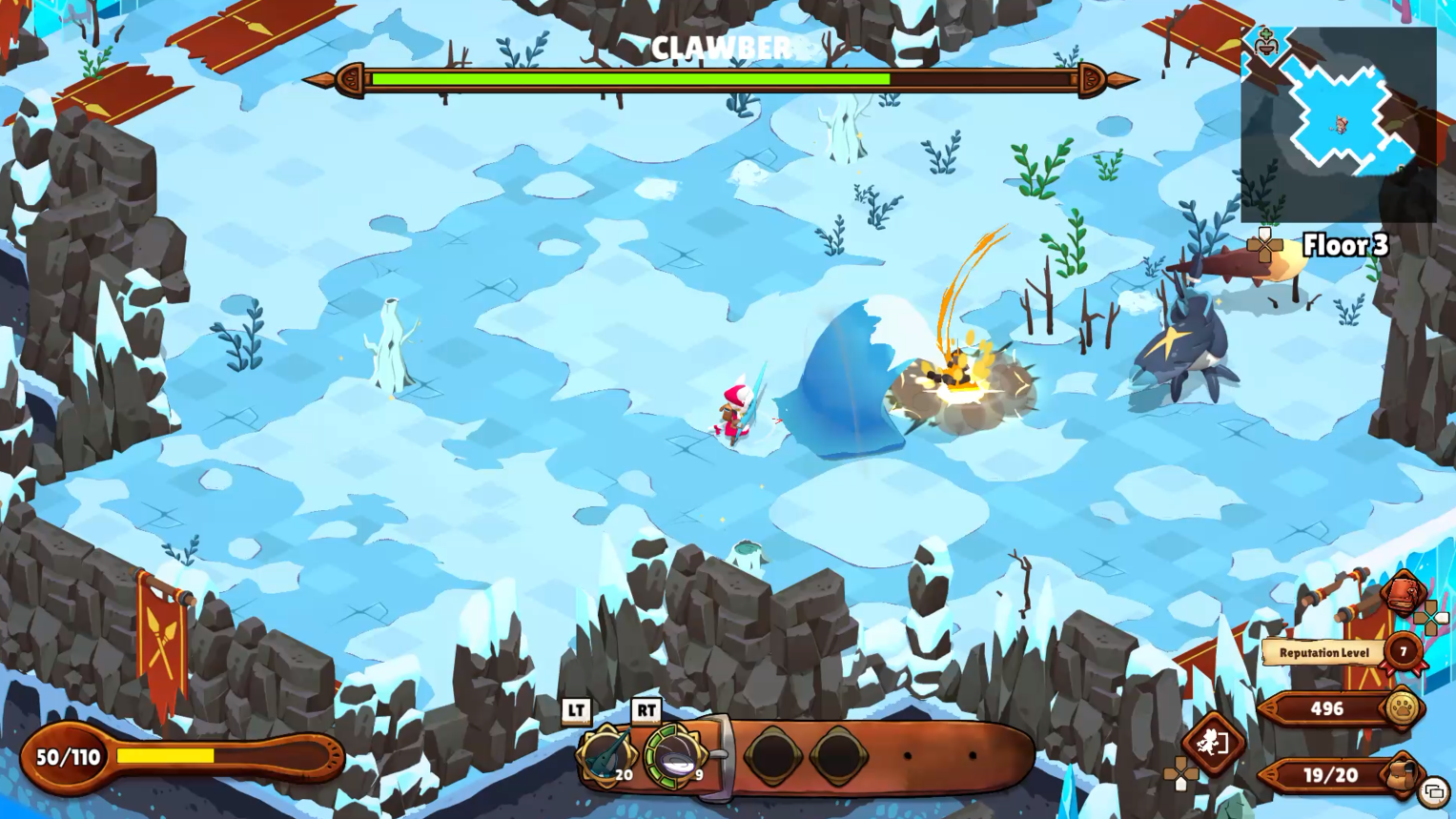
“The more you play, the more complex the enemies become and the more complex your kitchen must be.”
Cuisineer features many accessibility settings, including difficulty switching, text language, and key binds. Changing keys was a helpful addition, as I found using RB as the action button quite frustrating due to its frequent use during kitchen hours. I also appreciated that I don’t need to move items like wood into my inventory to build things; as long as the wood is in my storage, I could happily make purchases. However, for side quests, you still have to get the items.
Overall, Cuisineer presents a cute indie that packs a lot of content into a single game. The cycle of hunting, collecting, cooking, and building throughout the game means there is always something for you to do. While elements of the gameplay loop can be repetitive at times, there is still a good amount of content, making Cuisineer an indie that is worth checking out.
*Disclaimer: Reviewed on PC; code was provided by publisher.


